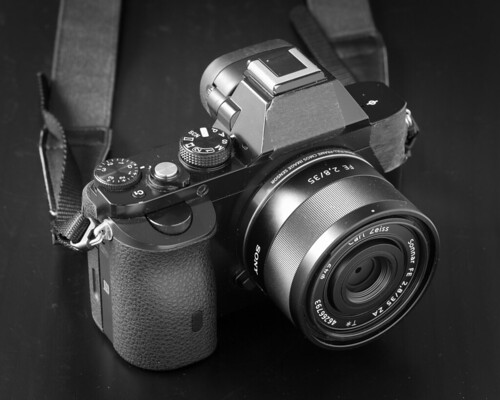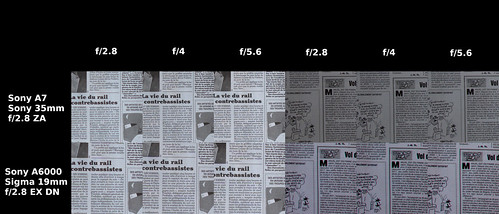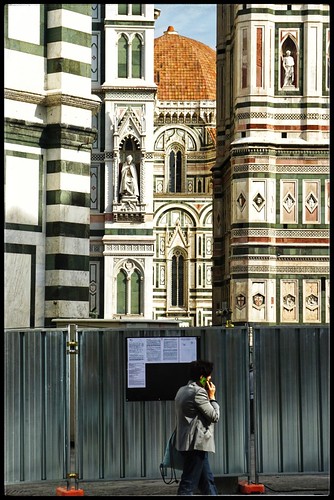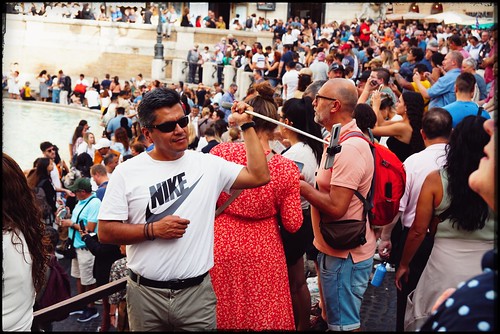It was so frustrating trying to manually focus my Nikkor lenses under some conditions that I decided I was beating my head against an intellectual and historical wall.
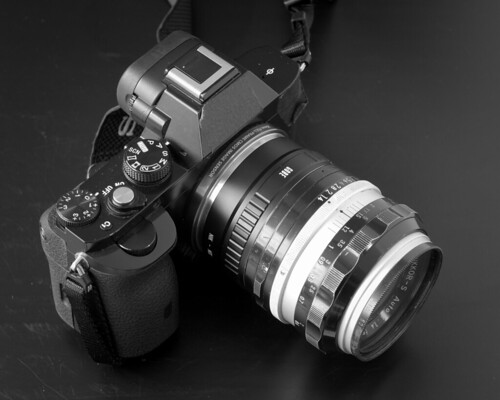
Sony A7 + adapter + Nikon Nikkor-S Auto 50mm f/1.4
The source of the frustration was I was missing the focus, even focus
magnification in the EVF. I'm getting old and my eyes aren't what they
used to be. After 50 years better/improved technologies exist. Perhaps I should free
my frustrated self and learn to trust the automation?
I know where the Magic Pixies are in old Nikkors, but they don't seem to enhance my photography, nor do they thrill me in the way I thought intellectually they should. Historically, I wanted to own these lenses simply because they were the "thing to own" when I was young and I couldn't afford them then. It'd come down to a "been there done that" situation.

Length comparison
Sony A7 + adapter + Nikkor-S Auto 50mm f/1.4
Sony A7 + Sony 55mm f/1.8 ZA "Zeiss"
Six out of twelve Nikon Nikkor manual focus lenses were very quickly sold and have found new and hopefully better homes.
In counting the proceeds of early sales it was easy to see there were sufficient funds to pick up two AF FE for Sony lenses. I would, of course, have to shop very carefully. Zeiss labeled Sony manufactured lenses are not cheap.
Crazily enough, I didn't have to search very hard. I educated myself to learn what "good" prices are these days. Wouldn't you know it, but several lenses showed up for the "right" prices from several sellers straight away.
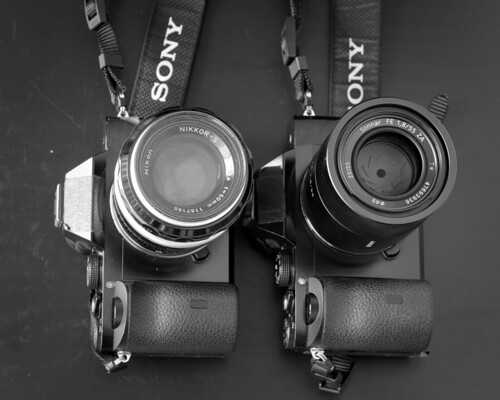
Sony A7 + adapter + Nikkor-S Auto 50mm f/1.4
Sony A7 + Sony 55mm f/1.8 ZA "Zeiss"
Perhaps it was the winter holiday season and folks were looking for a little extra change? After making contact I selected the most responsive sellers and picked both up two lenses on the same day. Color me impatient.
The first lens is a Sony 35mm f/2.8 ZA FE. It had been purchased new and then seldom used. The previous owner is a fashion videographer/photographer. He found he preferred other lenses. Checking the lens over I found the AF to be lightening quick. I'd have to check the resolution later after I got home.
The second lens is a Sony 55mm f/1.8 ZA FE. It too had been purchased new. This one was bought about two years ago. It was now being replaced by a Sony 50mm f/1.2 FE. The lucky b*sard! Like the 35mm f/2.8 the 55mm's AF is lightening quick, so I this one followed me home, too, where I could more fully explore its optical performance.

Sony A7 + Sony 35mm f/2.8 ZA "Zeiss"
Sony A7 + adapter + Nikkor-0 35mm f/2
The reason I started with 55mm and 35mm lenses on Full Frame Sony mirrorless is that when I shot 4x5 film, my favorite focal lengths were 210mm and 135/150mm. The new Zeiss labeled Sony's are the large format equivalent focal lengths in the smaller format.
Comparing the overall sizes of these to my old Nikkors with adapters is an interesting exercise.
The 55mm f/1.8 isn't that much shorter than an adapted Nikkor-S Auto 50mm f/1.4. The AF of the 55mm being the first obvious advantage over the Nikkor-S Auto.
The adapted 35mm Nikkor-O f/2 pre-Ai, however, looks like a telephoto compared with the Sony 35mm f/2.8 ZA. In fact, the little Sony is so small that it is approximately the same size and weight as the lovely (and very unfortunately discontinued) Sigma 30mm f/2.8 EX DN. Obviously the Sony covers Full Frame, where the Sigma only covers APS-C.
After I got home I compared the optical performance of the new tools against a couple old Nikkors that I still have and a pair of the Sigma EX DN that sit on my little APS-C cameras. This will be the subject of Parts Two and Three of "mid-Till".
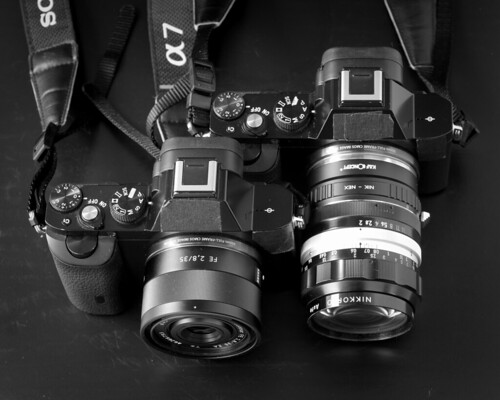
Sony A7 + Sony 35mm f/2.8 ZA "Zeiss"
Sony A7 + adapter + Nikkor-0 35mm f/2



